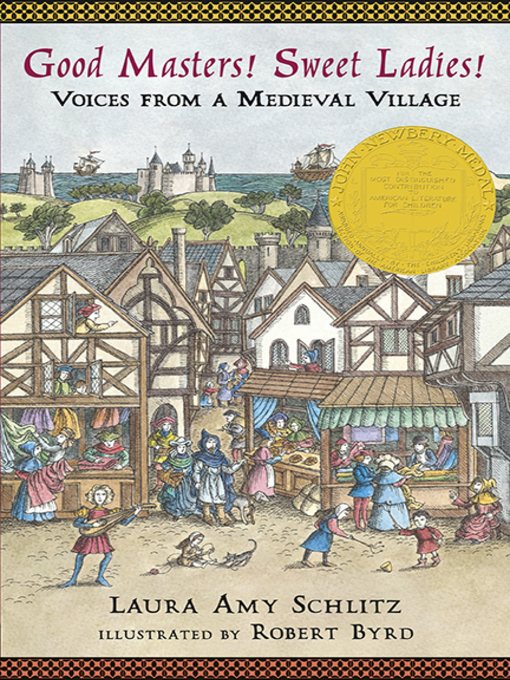Step back to an English village in 1255, where life plays out in dramatic vignettes illuminating twenty-two unforgettable characters. Winner of the Newbery Medal.
Maidens, monks, and millers' sons — in these pages, readers will meet them all. There's Hugo, the lord's nephew, forced to prove his manhood by hunting a wild boar; sharp-tongued Nelly, who supports her family by selling live eels; and the peasant's daughter, Mogg, who gets a clever lesson in how to save a cow from a greedy landlord. There's also mud-slinging Barbary (and her noble victim); Jack, the compassionate half-wit; Alice, the singing shepherdess; and many more. With a deep appreciation for the period and a grand affection for both characters and audience, Laura Amy Schlitz creates twenty-two riveting portraits and linguistic gems equally suited to silent reading or performance. Illustrated with pen-and-ink drawings by Robert Byrd — inspired by the Munich-Nuremberg manuscript, an illuminated poem from thirteenth-century Germany — this witty, historically accurate, and utterly human collection forms an exquisite bridge to the people and places of medieval England.
- It's your lucky day!
- Always Available Ebooks: Kids Classics
- Always Available Ebooks: Classic Fiction
- Always Available Ebooks: Classic Nonfiction
- Great reads without the wait!
- Adapted for Young Readers
- Noteworthy Reads
- Women's History Month
- Calling the Shots
- Our Favorite Sleuths
- Curl Up with a Cozy Read
- See all ebooks collections
- It's your lucky day!
- Always Available Audiobooks
- Great reads without the wait!
- Everyone Reads: Spanish Titles for Young Readers
- Adapted for Young Readers
- Noteworthy Reads
- Women's History Month
- Calling the Shots
- Our Favorite Sleuths
- Curl Up with a Cozy Read
- See all audiobooks collections




